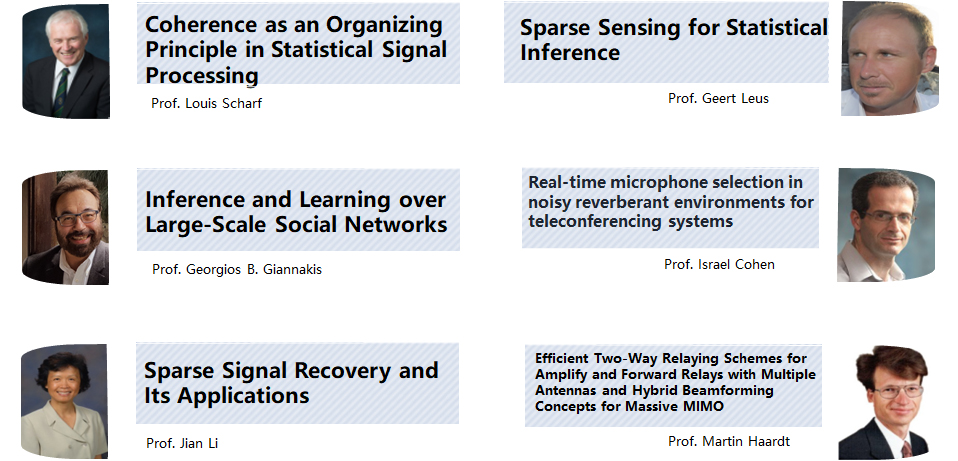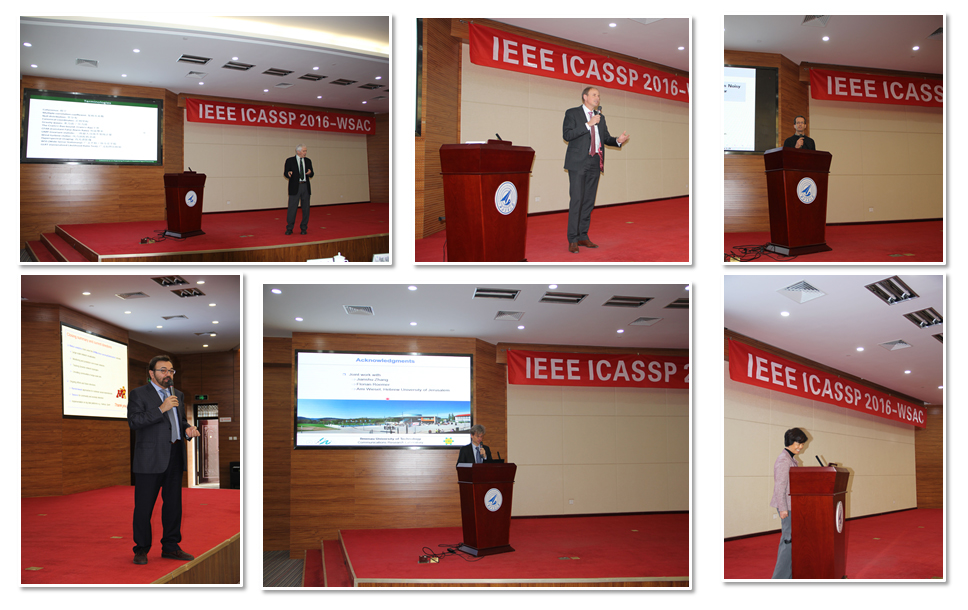ICASSP-WSAC was hold in Northwestern Polytechnical University
At 8:30 am on March 28th, the Sensor Array and Communication Seminar (WSAC), jointly organized by the IEEE Signal Processing Association and our school, was grandly opened in the fifth conference room of the International Conference Center. The conference was an important part of the IEEE International Conference on Acoustics, Speech and Signal Processing (ICASSP2016) held in Shanghai on March 20th, 2016.
The conference was presided over by Professor Huang Jianguo from the School of Navigation of Northwestern Polytechnical University. Professor Zhang Weihong, Vice President, Professor Li Jiandong, Vice President of Xidian, and Professor Yang Yixin, Dean of the School of Navigation, addressed the conference.
Six internationally renowned experts from the United States, Germany, the Netherlands and Israel were invited to attend the seminar. Louis Scharf, professor of electrical and computer engineering at Colorado State University, USA, analyzed the application of generalized coherence as an organizational principle in probing, estimation, and time series analysis under the theme of Coherence as an Organizing Principle in Statistical Signal Processing.
Professor Georgios B. Giannakis of the University of Minnesota conducted research on large-scale social networks and made inferences. In the report, Professor Jian Li from the Department of Electrical and Computer Engineering at the University of Gaitherville, Florida, discussed the results of recent centralized MIMO radars, explored MIMO radar waveform synthesis, and reviewed innovations in single or multiple probe waveform designs. An efficient SHAPE algorithm is proposed for shaping the sounding sequence to accommodate spectrum sharing. Professor Geert Leus from the Delft University of Technology in the Netherlands converted the classical sensing method, which is usually based on Nyquist rate sampling, into a more structured, lower-cost, sparse sensing mechanism designed for application. Specific inference tasks such as estimation, filtering, and detection, and the lowest detection cost to ensure mission performance. Professor Israel Cohen of Electrical Engineering at the Technion of Israel demonstrated a real-time system consisting of several microphone clusters and a main audio unit, and determined the comparable characteristics between the output signals of each microphone cluster. The research results can help us in each The time-frequency point selects the one with the best reception effect from a plurality of randomly placed microphones. Professor Martin Haardt, Professor of Electrical Engineering and Information Technology at the University of Ilmenau, Germany, and Head of the Communications Research Laboratory, presented the AF-mode multi-antenna two-way relay in the report and extended this discussion to the situation of multi-user communication. A hybrid precoding design for frequency selective large-scale MIMO channels is proposed.


The lectures of the experts in this seminar were profound and simple, humorous and vivid. The communication process in English gave the teachers and students present feelings of being overseas, and built a bridge between the club and international communication.

